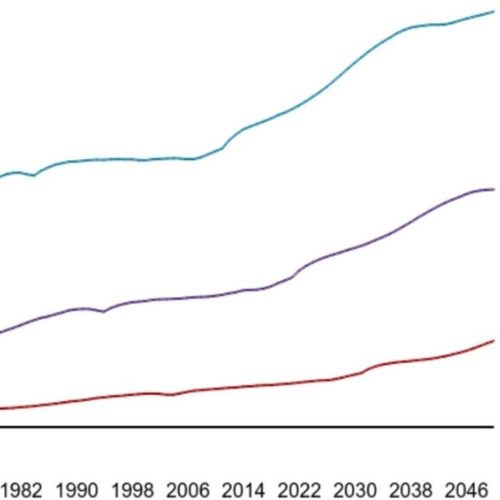After the significant setbacks caused by the COVID-19 pandemic, global life expectancy is once again on an upward trajectory. The UN's World Population Prospects 2024 report reveals promising trends and future projections for longevity across the globe.
A Rebound in Life Expectancy
The global average life expectancy at birth has reached 73.3 years in 2024, a substantial increase of 8.4 years since 1995. This upward trend is expected to continue, with projections suggesting an average longevity of 77.4 years by 2054. The resilience of human populations is evident as life expectancy has returned to pre-pandemic levels in almost all countries. During the peak of the pandemic in 2020 and 2021, life expectancy had dropped to 70.9 years from 72.6 years in 2019, highlighting the profound impact of the crisis.
Shifts in Mortality and Ageing Populations
The report projects that by the late 2050s, over half of all deaths globally will occur at age 80 or higher, a significant shift from just 17 per cent in 1995. This trend underscores the increasing number of older adults and the continued improvements in healthcare and living conditions.
A landmark achievement was recorded in 2023, with the number of deaths among children under the age of 5 falling below 5 million for the first time. However, it remains a concern that 95 per cent of these deaths occur in 126 countries with still-growing populations, including the Democratic Republic of the Congo, India, Nigeria, and Pakistan.
Saving Lives with Low-Cost Interventions
The report emphasizes the potential for saving millions of lives through the allocation of more resources to critical, low-cost treatments and interventions. Ensuring access to antenatal and postnatal care, skilled birth attendants, vaccinations, and nutritional supplements are key measures that could significantly improve survival rates worldwide over the next decade.
Population Dynamics and Ageing Trends
Increasing life expectancy is set to contribute to population growth or help mitigate population decline in nearly all countries. For nations where population sizes have peaked, reduced mortality rates, along with immigration, are expected to slow the decline caused by fertility rates below replacement levels.
By 2080, the global demographic landscape will see a historic shift: the number of people aged 65 or older will surpass those under 18. Projections indicate that by the late 2070s, there will be 2.2 billion individuals aged 65 and above, outnumbering the global population of children. Furthermore, by the mid-2030s, the number of people aged 80 and older will exceed the number of infants (under one year old).
Rapidly Growing Elderly Populations
Even in countries with rapidly growing populations and relatively youthful demographics, the number of people aged 65 or older is expected to rise significantly over the next 30 years. In regions where population sizes have already peaked or are projected to peak soon, this crossover will occur even sooner.
The World Population Prospects report highlights the ongoing changes in global demographics and the importance of sustained efforts to improve health and longevity for all. With targeted interventions and continued progress in healthcare, the future promises a healthier and longer-lived global population.




